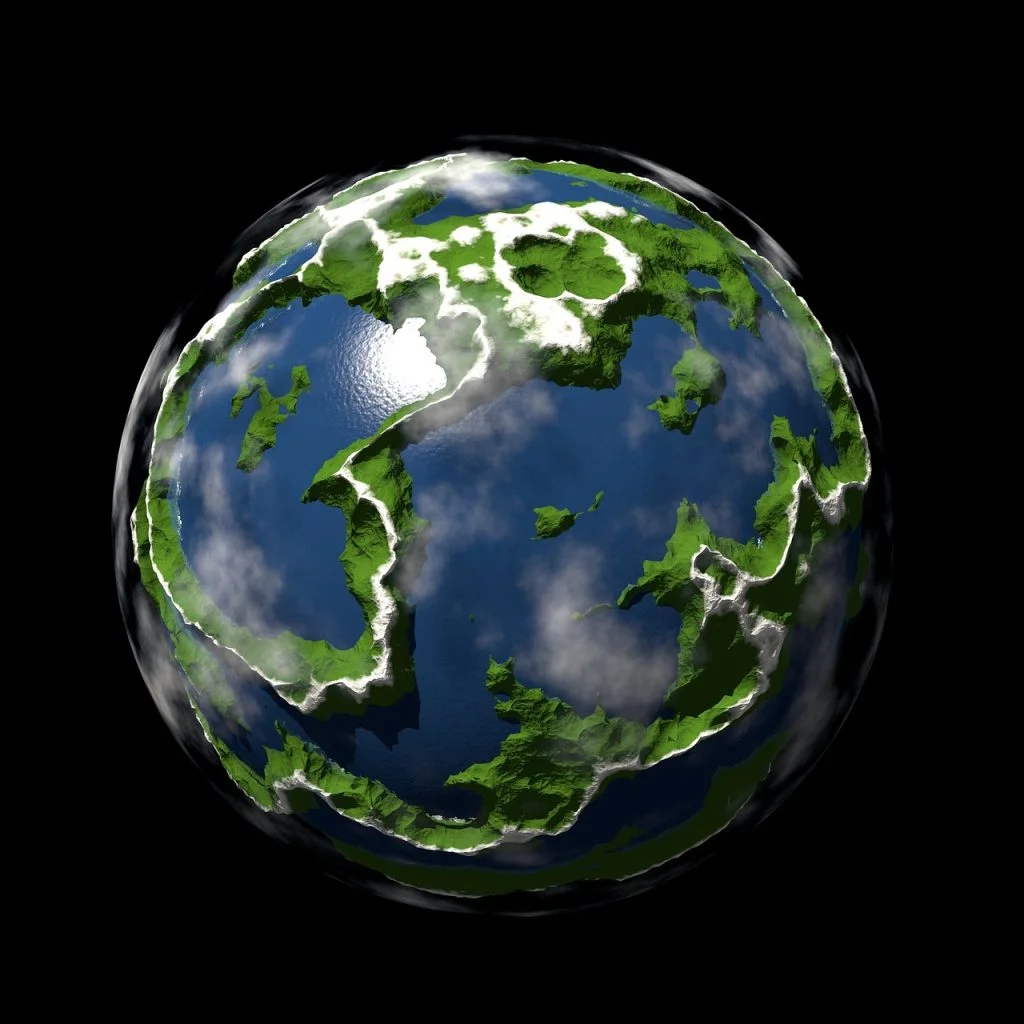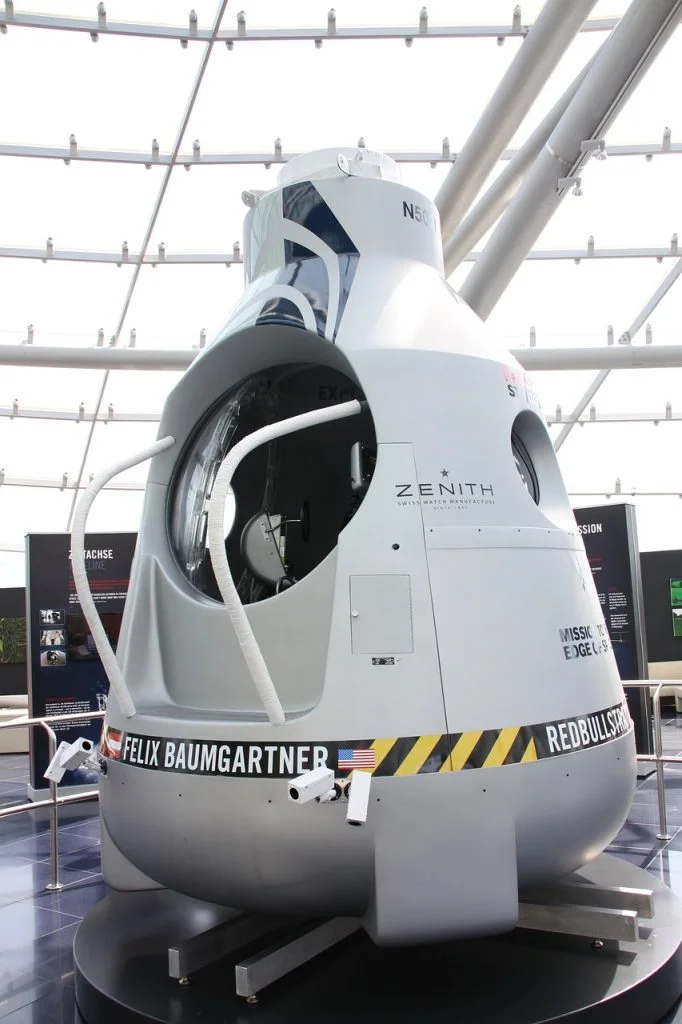Ever since I accidentally launched my childhood kite into the stratosphere (or at least, that’s where I like to think it ended up), I’ve been fascinated by this mysterious layer of our atmosphere. Did you know that the stratosphere is like the Earth’s big, cozy blanket, keeping us warm and protected from the harsh cosmic elements?
But, hey, don’t just take my word for it. Have you ever wondered why your satellite TV goes kaput during a solar storm? Yep, you guessed it – stratosphere shenanigans! Join me as we unravel amazing facts about the stratosphere. Spoiler alert: It’s not just a hangout spot for weather balloons and rogue kites!
The stratosphere: where the blue sky bows to the black of space.
Dr. Ava Richardson
Stratosphere Facts
Let’s ascend into the fascinating realm of the stratosphere. Here, you’ll discover amazing facts about this crucial part of our atmosphere that shapes life on Earth. Keep in mind that a quiz awaits at the end of this article, so absorb every detail to triumph!
- The stratosphere is the second layer of Earth’s atmosphere, sitting above the troposphere.
- It extends from about 10 to 50 kilometers (6 to 31 miles) above Earth’s surface.
- Temperatures in the stratosphere increase with altitude, unlike in the troposphere.
- Ozone Layer: The stratosphere contains the ozone layer, which is crucial for blocking harmful ultraviolet radiation from the Sun.
- Commercial Aircraft often cruise in the lower levels of the stratosphere to avoid turbulence of the troposphere.
- Weather Balloons can reach into the stratosphere, gathering important meteorological data.
- The stratosphere is very dry; it contains little water vapor.
- No Weather: The stratosphere experiences few weather phenomena, as most weather occurs in the troposphere below.
- Ozone Depletion caused by human-made chemicals was a significant environmental issue, particularly in the late 20th century.
- The Montreal Protocol was an international agreement to phase out ozone-depleting substances, helping to protect the stratospheric ozone layer.
- Stratospheric Temperature Inversion occurs because ozone absorbs ultraviolet radiation, warming the upper layers.
- Stratospheric Clouds, rare and typically only found in Polar Regions, are implicated in ozone depletion.
- Jet Streams, strong horizontal winds, occur near the tropopause, the boundary between the troposphere and stratosphere.

- Auroras often occur in the lower stratosphere, especially in Polar Regions.
- The stratosphere is stratified in temperature, with warmer layers higher up and cooler layers below.
- The Stratopause is the boundary between the stratosphere and the mesosphere above.
- Radiosondes attached to weather balloons measure temperature, humidity, and pressure in the stratosphere.
- Ozone Concentration varies seasonally, with higher concentrations in the spring and fall.
- The Vienna Convention for the Protection of the Ozone Layer was established to regulate activities harmful to the ozone layer.
- Commercial Supersonic Flights, like the Concorde, used to fly in the lower stratosphere.
- Stratospheric Ozone absorbs more than 90% of the Sun’s high-frequency ultraviolet light.
- Global Warming impacts may extend to the stratosphere, influencing its temperature and dynamics.
- The stratosphere’s relative stability makes it ideal for long-distance jet flights.
- Volcanic Eruptions can inject ash and gases into the stratosphere, affecting climate and aviation.
- Stratospheric Sulfate Aerosols can cool the Earth’s surface by reflecting solar radiation back into space.
- Ozone Hole refers to the area of significant ozone depletion, primarily observed over Antarctica.
- Stratospheric Circulation plays a key role in distributing ozone around the planet.
- Space Weather effects, like solar flares, can influence the stratosphere’s composition and dynamics.

- The stratosphere has less turbulence compared to the troposphere, due to its stable temperature stratification.
- Research Balloons can ascend to the stratosphere for scientific studies and observations.
- Sudden Stratospheric Warming events can influence weather patterns in the troposphere.
- Polar Stratospheric Clouds play a role in chlorine and bromine release, leading to ozone depletion.
- The Antarctic Ozone Hole is largest during the Southern Hemisphere’s spring.
- Ozone Layer Recovery is projected to occur by the mid-21st century, thanks to global efforts to reduce harmful emissions.
- The stratosphere’s chemical composition is primarily nitrogen and oxygen, similar to the troposphere.
- Subsonic Aircraft can sometimes reach the lower edges of the stratosphere.
- Ultraviolet Radiation from the Sun is crucial for the creation and maintenance of the ozone layer.
- The Chapman Cycle describes the chemical reactions involving ozone in the stratosphere.

- High-Altitude Drones can operate in the stratosphere for extended periods, benefiting from its stable conditions.
- Ozone Layer Thickness varies globally, being generally thinner at the equator and thicker towards the poles.
- The Arctic Ozone Hole is less prominent but has shown significant depletion in recent decades.
- Stratospheric Sampling helps scientists understand atmospheric chemistry and climate change.
- Ionizing Radiation from space interacts with the stratosphere, affecting its chemical composition.
- Ozone Measurement is performed using satellites, ground-based instruments, and balloons.
- Stratospheric Wind Patterns influence the distribution of ozone and other atmospheric constituents.
- Climate Change can alter stratospheric wind patterns, impacting weather and climate globally.
- High-Altitude Living organisms, like some types of bacteria and fungi, have been found in the stratosphere.
- Stratospheric Aerosol Injection is a proposed geoengineering technique to mitigate global warming effects.
- Weather Forecasting models sometimes incorporate stratospheric data for greater accuracy.
- Ozone Layer Monitoring is crucial for understanding environmental health and guiding policy decisions.
Stratosphere Myths

Now that we’ve soared through the facts of the stratosphere, let’s navigate the cloudy realm of myths and uncover the truths hidden within.
- The Stratosphere is Uniformly Cold
While the lower part of the stratosphere is indeed cold, temperatures actually increase with altitude due to the absorption of ultraviolet radiation by the ozone layer. This warming effect creates a unique temperature inversion unlike the layers above and below it. - Humans Cannot Survive in the Stratosphere
Although the stratosphere is harsh and inhospitable, with thin air and extreme cold, high-altitude balloons and specialized aircraft can safely navigate this layer. Plus, modern technology allows humans to temporarily visit the stratosphere with the right equipment. - The Stratosphere Has No Weather
It’s true that the stratosphere doesn’t experience weather like the troposphere (with clouds and storms), but it does have its own dynamics. For example, the stratospheric polar vortex can have a significant impact on winter weather in the troposphere. - The Ozone Layer is Evenly Distributed in the Stratosphere
The concentration of ozone in the stratosphere varies with both altitude and latitude. It’s most densely concentrated in the ozone layer between about 15 and 35 kilometers above Earth, particularly over the poles. - Airplanes Fly in the Stratosphere to Avoid Turbulence
While it’s true that commercial airplanes often cruise in the lower stratosphere to avoid weather-related turbulence of the troposphere, they also do so to take advantage of thinner air, which reduces drag and improves fuel efficiency.
No products found.
Stratosphere Quotes

I had no idea that I could find so many quotes about this topic. Here are my five favorite ones:
In the stratosphere, every breath is a reminder of the thin line between Earth and the cosmos.
Leo Thompson
Prof. Leo Thompson reflects on the fragility and wonder of the stratosphere as a thin barrier between our planet and the universe.
The stratosphere, a silent guardian, shields us daily from the sun’s fiery gaze.
Emma Brooks
Emma Brooks highlights the protective role of the stratosphere in shielding Earth from harmful solar radiation.
Soaring through the stratosphere, one truly understands the dance of air and light.
James Adler
Capt. James Adler shares his awe-inspiring experience of flying through the stratosphere, emphasizing the interplay of natural elements.
Above the clouds, in the stratosphere, lies the frontier of our earthly bounds.
Maria Gonzalez
Maria Gonzalez describes the stratosphere as a frontier at the edge of Earth’s atmosphere, emphasizing exploration and discovery.
The stratosphere: a vast, unseen ocean above us, as mysterious as the deep sea.
Samuel Lee
Dr. Samuel Lee draws an intriguing comparison between the stratosphere and the deep sea, pointing out their shared mystery and vastness.
Stratosphere FAQ

From the lofty quotes about the stratosphere, we transition to the FAQ section. Pay close attention; these last pieces of information are your toolkit for the upcoming quiz.
- What is the Stratosphere?
The stratosphere is a calm layer of Earth’s atmosphere, above the troposphere and below the mesosphere, known for containing the protective ozone layer. - How High is the Stratosphere?
It begins about 10 kilometers (6 miles) above Earth and extends up to 50 kilometers (31 miles) high, with height varying by location and season. - What is the Temperature of the Stratosphere?
Temperatures in the stratosphere increase with altitude, ranging from -51°C (-60°F) near its lower boundary to around 0°C (32°F) at its upper end. - Why is the Stratosphere Important?
It’s vital for life due to the ozone layer that shields Earth from harmful UV rays and influences global climate and air movement. - What are Some Characteristics of the Stratosphere?
Key features include thinner air, the presence of the ozone layer, fast-moving jet streams, and a lack of typical weather phenomena like storms and clouds.
No products found.
Stratosphere Trivia

Strap in for the Stratosphere Quiz! Miss all the questions, and you might just find yourself floating in the stratosphere, hunting for Wi-Fi signals!
Conclusion
The stratosphere! A place where even birds can’t reach. It’s where the ozone does its magic, and temperatures can turn upside down. Kind of like that one weird room in your house where nothing seems to make sense. But hey, that’s what makes the stratosphere so special! It’s full of surprises and key to our survival.
So, have you ever looked up at the sky and thought, ‘I wonder if my lost balloons are having a party up there in the stratosphere?’ Because, let’s face it, that’s probably the closest many of us will get to this atmospheric VIP lounge!
5 Sources Used For This ArticleOzone Layer – Wikipedia
Troposphere – Climate Policy Watcher
Earth’s atmosphere: Facts about our planet’s protective blanket – Space
What Is the Stratosphere? – Earth How


